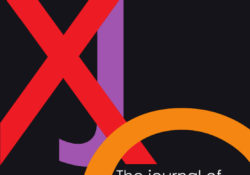eric.ed.gov har udgivet: This workbook is designed as an easy-to-read, slower-paced mathematics text for students who have learning, reading, and language problems. Helping students fulfill mathematics requirements for graduation is a goal; the book can be used as the core or supplement to the mathematics curriculum in mainstreamed or special education classrooms, in mathematics laboratories, or as part of sheltered workshop and vocational training programs. The eight units begin with a brief discussion of how fractions are used in real life. Each lesson focuses on only one major concept, and includes comprehension exercises with an answer key. Most lessons are reinforced with at least one worksheet, available in the teacher’s guide. The units are titled: Fractions All Around You, Naming Fractions, Different Names for the Same Amount, Renaming Fractions, Comparing… Continue Reading →
Like this:
Like Loading...
tandfonline.com har udgivet en rapport under søgningen “Teacher Education Mathematics”: Abstract Formulae display:?Mathematical formulae have been encoded as MathML and are displayed in this HTML version using MathJax in order to improve their display. Uncheck the box to turn MathJax off. This feature requires Javascript. Click on a formula to zoom. Abstract People’s attitudes toward mathematics are multifaceted. Across four studies, we found that children and adults have different attitudes about mathematics when asked specifically about whole numbers, as opposed to fractions. The vast majority of children and adults reported negative attitudes toward fractions despite having positive attitudes toward whole numbers. Across both children and adults, the difference in fraction and whole-number attitudes was present across levels of math achievement, indicating that it was not just participants who were worse… Continue Reading →
Like this:
Like Loading...
eric.ed.gov har udgivet: Contemporary state math standards emphasize that students must demonstrate an understanding of the mathematical ideas underlying the computations that have typically been the core of the elementary school math curriculum. The standards have put an increased emphasis on the study of fractions in upper elementary grades, which are the years during which students build a strong foundation in fractions concepts. At the same time, the National Mathematics Advisory Panel (2008) cites limited understanding of fractions as the key reason for the high failure rate in algebra courses. Longitudinal data from both the United States and the United Kingdom have demonstrated that knowledge of fractions in the elementary grades plays a powerful role in subsequent success in algebra, the gateway to math achievement in high school. Members of… Continue Reading →
Like this:
Like Loading...
eric.ed.gov har udgivet: Created by teachers for teachers, the Math Academy tools and activities included in this booklet were designed to create hands-on activities and a fun learning environment for the teaching of mathematics to the students. This booklet contains the “Math Academy–Dining Out! Explorations in Fractions, Decimals, and Percents,” which teachers can use to enhance their math instruction while staying true to the academic rigor required by the state standards framework. Included in this booklet are activities the author used for the restaurant Math Academy. This Math Academy is designed to help students understand how to use fractions, decimals, and percents in the context of restaurants and money. In this day of credit and gift cards, children do not have as many real-life opportunities to count money and make… Continue Reading →
Like this:
Like Loading...

tandfonline.com har udgivet en rapport under søgningen “Teacher Education Mathematics”: ABSTRACT ABSTRACT International comparisons of languages have shown how mathematical concepts can be expressed and conceptualised in different languages. For multilingual students, these findings raise the question of how the interplay of languages and conceptualisations shape multilingual learning processes. This paper presents an investigation of case studies of bilingual learning processes of Turkish–German speaking students in Grade 7. Investigating the conceptual learning pathways of 14 focus students reveals that multilingual students navigate between different conceptualisations of fractions across both languages. To account for how these multilingual resources can provide opportunities for deepening conceptual understanding of fractions, two bilingual modes are distinguished and empirically substantiated: (1) The complementarity mode, in which code switching occurs for combining different nuances of a conceptualisation,… Continue Reading →
Like this:
Like Loading...

